Understanding ABA’s Role in Mitigating Fears
Applied Behavior Analysis (ABA) is a scientifically supported approach tailored to help children with autism manage and reduce their fears and phobias. By targeting specific behaviors and responses through structured interventions, ABA plays a vital role in empowering children to face their anxieties and improve overall well-being.
Fundamental Components of ABA Therapy for Anxiety and Fears
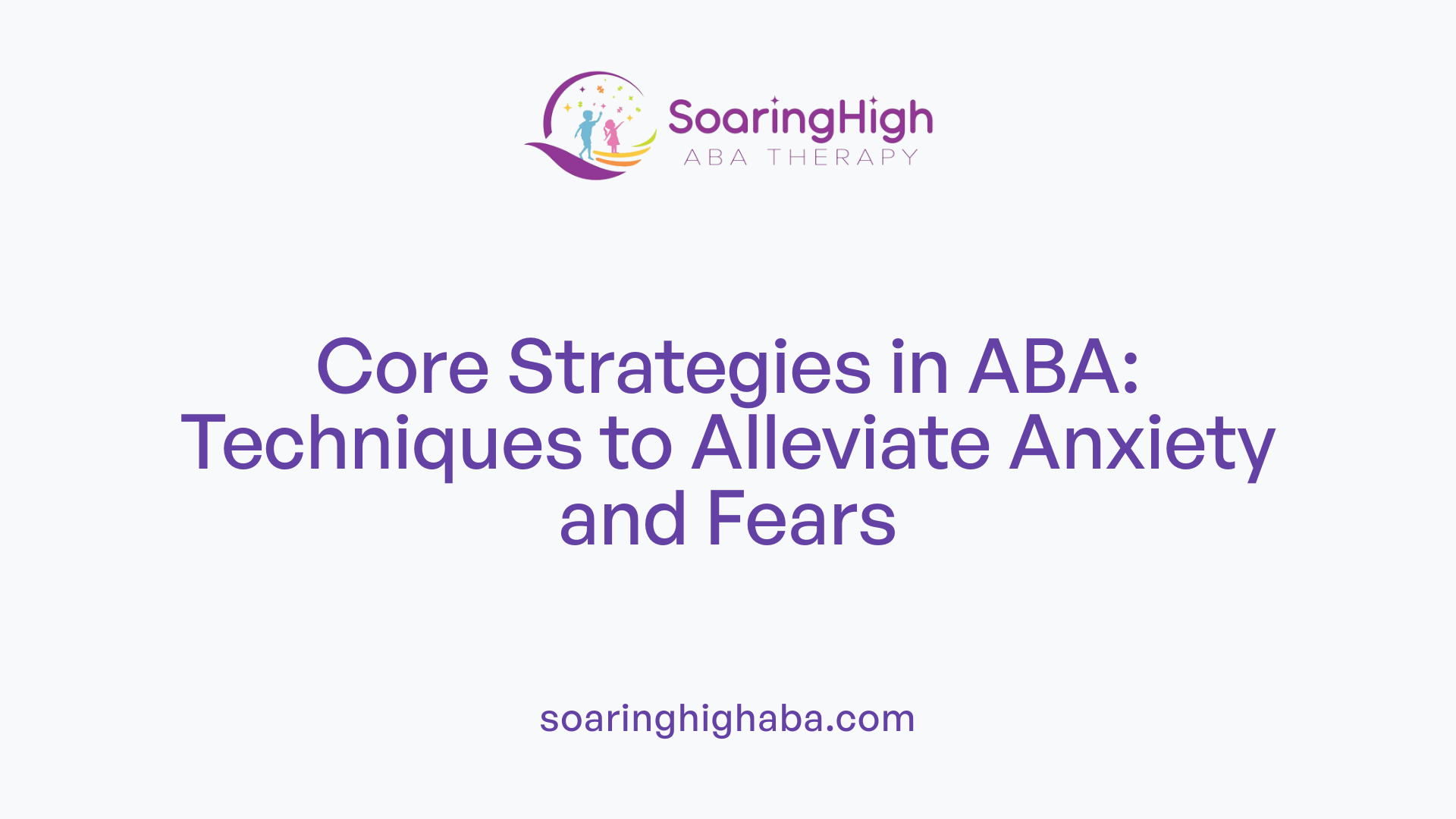
What are the main components of ABA therapy aimed at alleviating anxiety and fears?
ABA therapy (Applied Behavior Analysis) employs a variety of structured strategies to help children with autism overcome fears and manage anxieties. Central to this approach are behavioral interventions such as exposure therapy, reinforcement techniques, and habit reversal methods. These help reduce avoidance behaviors and promote positive engagement with feared stimuli.
A key element is systematic desensitization, which involves gradual and controlled exposure to anxiety-provoking situations. For example, children might start by discussing a feared stimulus like insects, then look at pictures, observe real objects from a distance, and eventually interact with the stimulus. This gradual process helps the brain adjust slowly, diminishing fear responses over time.
In addition, skill-building activities are incorporated. These include teaching social cues, emotional recognition, and problem-solving skills through cognitive-behavioral therapy (CBT) programs like ‘Coping Cat,’ and manualized protocols. These activities empower children to better understand and regulate their emotions.
Parental involvement plays an essential role. Training parents using methods like SPACE (Supportive Parenting for Anxious Childhood Emotion Regulation) helps reinforce therapy strategies at home. Parents are encouraged to acknowledge children’s anxieties and use techniques such as humor or reassurance to support progress.
The approach also benefits from the use of visual supports—charts, flashcards, and storyboards—that explain concepts or routines. These tools reduce uncertainties, making children feel more secure and less anxious.
Behavioral techniques like stimulus fading and differential reinforcement are commonly used. Stimulus fading involves gradually increasing exposure levels, while differential reinforcement encourages approach behaviors and reduces avoidance.
Multimodal stimuli and individualized reinforcement systems further motivate children and facilitate engagement. Therapists often combine these with play-based activities, making the experience accessible and enjoyable.
Overall, the main components of ABA therapy are designed to modify behavior, diminish fears, and build life skills, leading to improved well-being for children with autism.
What evidence-based strategies and techniques are used in ABA therapy to treat fears and phobias?
Numerous research studies support the use of specific ABA strategies for treating fears and phobias. Notably, graduated exposure and systematic desensitization form the backbone of effective intervention.
Graduated exposure involves creating a hierarchy of feared stimuli, starting with the least anxiety-provoking and gradually progressing to more challenging situations. For example, a child with a fear of spiders might begin by talking about spiders, then look at pictures, observe a real spider from a safe distance, and finally, touch or hold one. This incremental process helps diminish irrational fears.
Stimulus fading is a related technique where the intensity or proximity of the stimulus is slowly increased, aiding the child's comfort level. Stimulus control and social stories are also employed to clarify expectations and promote safe responses.
Reinforcement strategies are pivotal. Rewards are given when children face fears or demonstrate coping behaviors, thus encouraging continued efforts. Visual supports and calming stimuli enhance the child's ability to stay engaged and relaxed.
Parent involvement is critical, as they reinforce strategies at home. Consistent practice of these techniques in different settings helps generalize the gains.
Overall, these evidence-based interventions focus on reducing anxiety triggers step-by-step while fostering confidence and skills. They are adaptable to individual needs and are supported by rigorous scientific research.
The Science Behind Fears: Theories and Neurobiological Perspectives
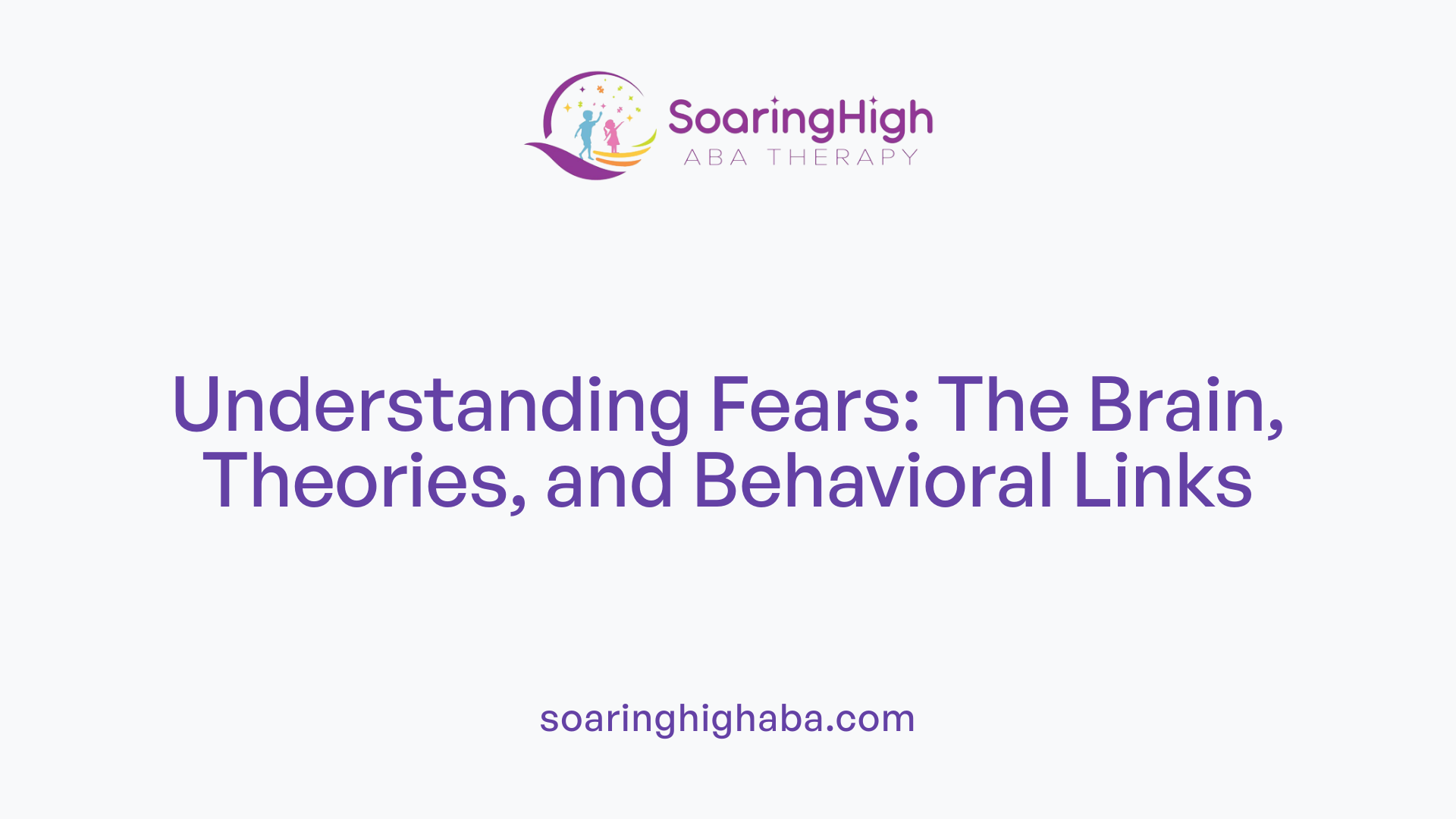
What theoretical explanations, such as 'the bully in the brain', are used to understand fears and phobias within ABA?
Within Applied Behavior Analysis (ABA), understanding fears and phobias involves exploring various scientific models and theories. One prominent model is Mowrer’s two-factor theory, which explains how fears are learned and maintained through two interconnected processes. The first factor, respondent conditioning, occurs when a neutral stimulus becomes associated with a fearful event, creating a conditioned fear response. The second factor involves operant conditioning, where avoidance behaviors are reinforced because they reduce fear or discomfort, thus perpetuating the phobia.
Further modern explanations incorporate relational responding and propositional knowledge. This perspective suggests that fears can be transferred or transformed via relational networks—complex mental links between stimuli—without direct traumatic experiences. For example, a child might develop a fear of insects not only through direct encounters but also through indirect associations, such as stories or observations.
Neurobiological insights bolster these behavioral models, focusing on critical brain circuits. The amygdala, a region of the brain involved in processing fear, plays a crucial role in initiating and sustaining fear responses. When a feared stimulus is encountered, the amygdala activates, triggering physiological and emotional reactions. Over time, neural pathways strengthen, making the fear response more automatic and persistent.
In addition to these, newer models emphasize the roles of safety signals, outcome expectancies, and cognitive factors. Safety signals—cues that indicate safety rather than danger—can help reduce fear if recognized correctly. Conversely, negative outcome expectancies—anticipations that a feared object will cause harm—fuel ongoing anxiety. Cognitive approaches propose that fears are related to learned expectations about danger, which can be modified through systematic exposure and cognitive restructuring.
These integrated theories demonstrate that fears and phobias are maintained by learned associations, relational links, neural circuitry, and cognitive appraisals. In ABA therapy, interventions target these processes by systematically reducing maladaptive associations, enhancing safety signals, and reshaping expectations.
How do models of avoidance learning, like Mowrer’s two-factor theory, inform the techniques used in ABA?
Mowrer’s two-factor theory significantly influences ABA strategies, especially in designing exposure-based interventions. By understanding that avoidance behaviors serve to diminish fear temporarily, therapists can guide children through controlled exposure sessions, systematically decreasing their avoidance responses.
For example, gradual exposure therapy—starting from least intimidating stimuli—aims to deactivate the learned avoidance cycle by presenting feared stimuli in a safe environment. Over time, this weakens the association between the stimulus and the fear response, reducing the incentive to avoid.
Similarly, reinforcement strategies may be used to encourage approach behaviors rather than avoidance, helping children form new, more adaptive response patterns. Exposure sessions might include visual supports and modeling to facilitate this learning.
How does relational responding and propositional knowledge influence fear response and transfer?
Relational responding refers to the way individuals relate stimuli in complex mental networks, which can cause fears to transfer from one stimulus to another. For instance, if a child fears spiders, they might also develop fear towards other insects or even photograph representations.
Propositional knowledge involves beliefs or statements about the world, which can influence fear. For example, believing “spiders are dangerous” creates a propositional link that sustains fear regardless of direct experience. ABA techniques aim to alter these relational and propositional links through systematic challenging of beliefs, exposure to safe stimuli, and providing accurate information.
What role do neuro circuits involving the amygdala and fear responses play?
The amygdala is central in processing fear responses, triggering physiological reactions like increased heart rate, sweating, and alertness. In children with autism or phobias, hyperactivity in the amygdala can contribute to heightened and persistent fear responses. ABA therapies seek to modify these responses by reducing the triggers or altering the emotional associations.
Through repeated, controlled exposure, the neural pathways can weaken, leading to diminished fear responses over time. This neuroplasticity—the brain’s ability to change—is fundamental to ABA approaches targeting fear reduction.
How do cognitive factors, safety signals, and outcome expectancies interact in fear learning?
Cognitive factors include beliefs, memories, and expectations about danger or safety. Safety signals, such as a familiar person or environment, can mitigate fear if correctly identified. Conversely, negative outcome expectancies fuel anticipatory anxiety, reinforcing fear cycles.
Effective ABA interventions focus on enhancing safety signals and correcting catastrophizing beliefs. By systematically providing new experiences where feared stimuli are safe, children learn to update their mental models, reducing irrational fears and promoting resilience.
| Aspect | Explanation | Impact on Treatment |
|---|---|---|
| Models of Avoidance Learning | Two-factor theory explains learned fears and avoidance | Guides exposure and reinforcement techniques |
| Relational Responding & Propositional Knowledge | Fears transferred via mental links and beliefs | Informed strategies to modify associations and beliefs |
| Neuro circuits (Amygdala) | Processes fear responses in the brain | Exposure aims to weaken neural fear pathways |
| Cognitive Factors | Beliefs and expectations shape fear | Reshaped through education and exposure |
| Safety signals & Outcome Expectancies | Influence anticipation of danger | Therapy emphasizes safety and correcting beliefs |
This comprehensive understanding underscores the biological and psychological complexity of fears. It also highlights the importance of a multifaceted approach in ABA, combining behavioral techniques with an understanding of neuro and cognitive processes to effectively reduce fears and phobias.
Progress through Personalized, Gradual Exposure Techniques
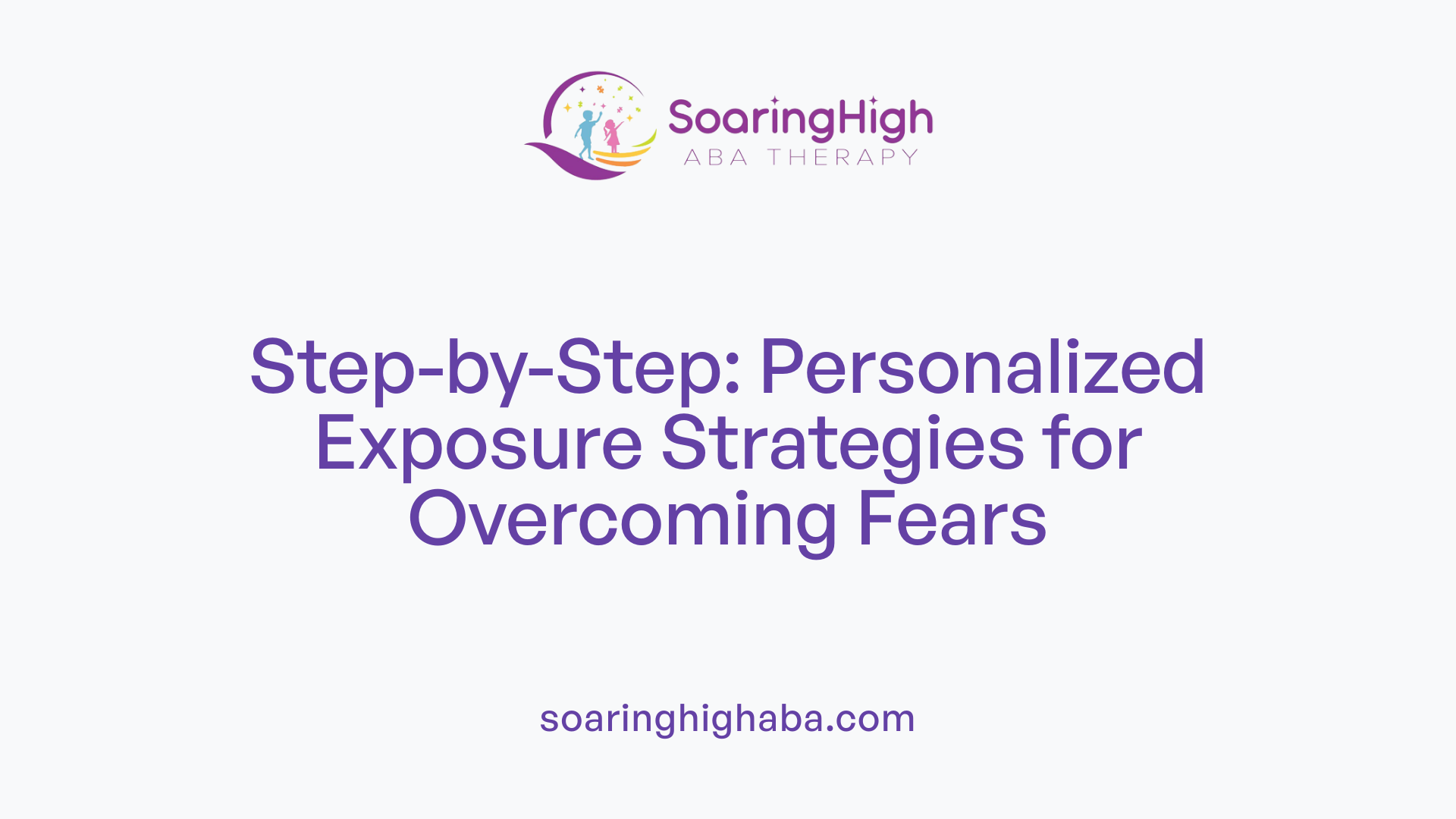
How does ABA therapy use graduated exposure to address fears?
ABA therapy employs structured, step-by-step exposure procedures to help children cope with fears. This approach begins with the child talking about or observing the feared object or situation in a safe setting.
One common method involves creating a hierarchy of exposure, starting from the least intimidating step and advancing gradually. For example, a child might first discuss a fear (like spiders) with the therapist, then look at pictures, observe real spiders at a distance, and eventually touch or hold one.
Case example: Tony’s hierarchy for overcoming fear
Tony, a child with autism, was helped through an eight-week systematic exposure plan. The hierarchy involved 15 steps, starting from casual conversations about his aunt to her visiting him at home. Over time, Tony was gradually introduced to real contact and interaction with her, reducing his anxiety.
This gradual approach allows the brain to adjust slowly to new stimuli, making the fear more manageable. Repeated experiences where no harm occurs help diminish the irrational response.
Stimulus fading and increasing proximity
Stimulus fading is a related technique where the fear-inducing stimulus is gradually brought closer or made more realistic. Initially, visual supports such as photographs or toys are used to represent the feared item.
As the child’s comfort increases, the therapist decreases the distance, moves to real objects, and eventually introduces real encounters. Each step is supported by reinforcement and calming strategies.
Visual supports and social stories
Visual aids—like charts, flashcards, and storyboards—are essential tools in this process. They help children understand what will happen and reduce uncertainty, which in turn alleviates anxiety.
Social stories, which are personalized narratives describing feared situations and appropriate responses, further assist in building understanding and coping skills.
How ABA techniques like stimulus control and systematic desensitization help in managing fears?
Stimulus control and systematic desensitization form the backbone of ABA’s approach to fear reduction. Stimulus control involves modifying the environment to minimize triggers and create safe, manageable settings.
Systematic desensitization, often carried out through graduated exposure, exposes the individual to the feared stimulus in a controlled manner, starting with less threatening forms and progressing to more direct encounters.
Together, these strategies teach children to respond with calmness and confidence. They are personalized based on detailed assessments and often supported by visual tools and social stories, which clarify expectations and aid understanding.
Ultimately, ABA aims to help children recognize their fears, learn effective coping mechanisms, and gradually diminish the power of irrational fears—resulting in improved emotional regulation and well-being.
| Technique | Description | Best Use | Additional Tools |
|---|---|---|---|
| Graduated Exposure | Step-by-step exposure beginning with less threatening stimuli | Phobia treatment, social fears | Visual supports, social stories |
| Stimulus Fading | Gradually increasing proximity and realism of the feared object | Food aversions, specific phobias | Visual aids, reinforcement |
| Social Stories | Personalized narratives explaining situations to ease understanding | Unusual fears, new routines | Visual supports, role-playing |
| Reinforcement | Rewarding calm behaviors and approach responses | General fear management | Positive reinforcement systems |
By systematically using these methods, ABA therapy helps children with autism manage fears effectively, supporting their emotional growth and adaptability.
Implementing Play and Humor in Fear Reduction Strategies
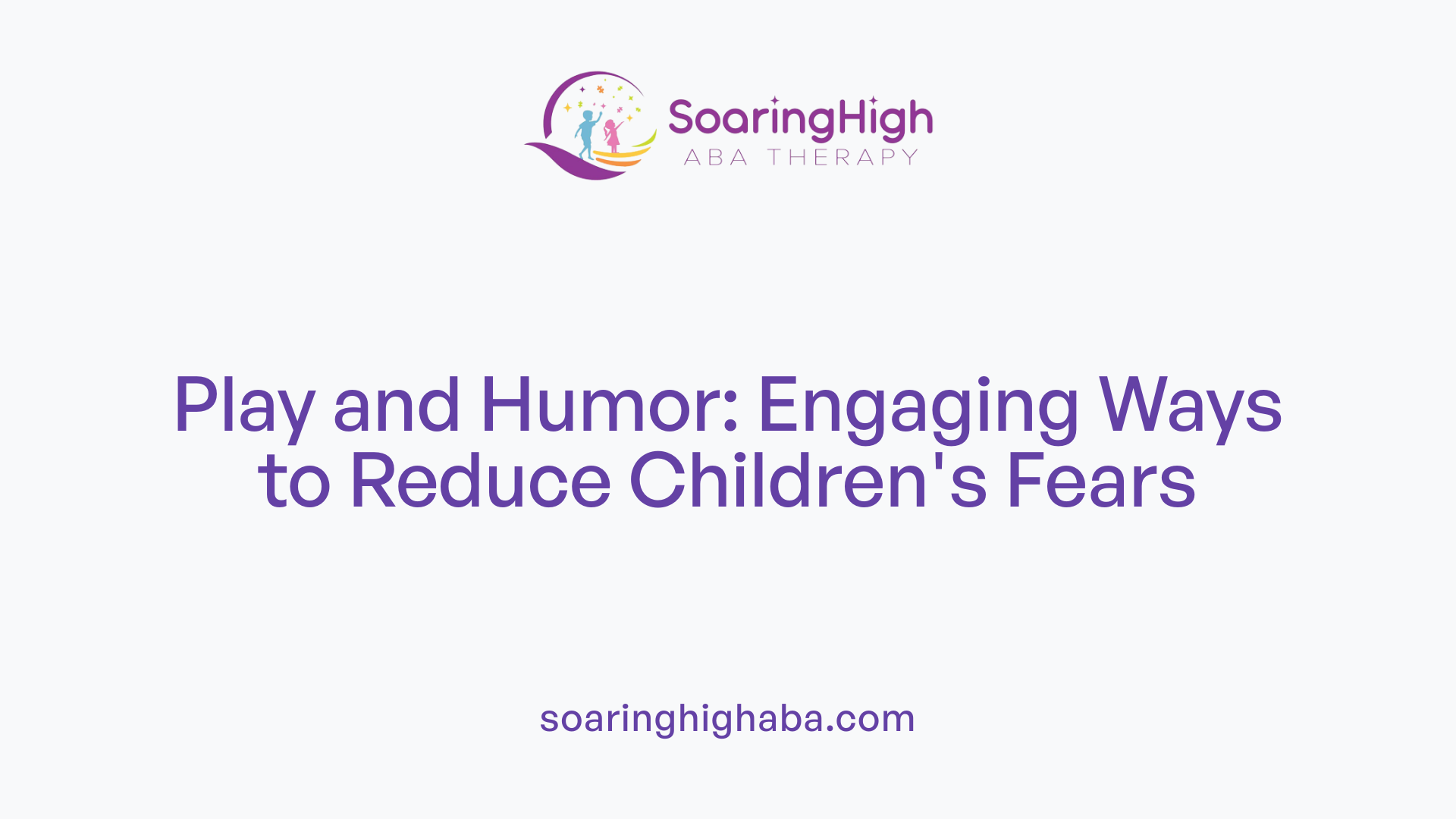
How do play-based wellness interventions aid children in overcoming fears?
Play-based wellness interventions are an integral part of modern ABA therapy, especially when addressing fears and phobias. These approaches incorporate engaging activities, such as games, storytelling, and interactive play, to create a safe and stimulating environment. In doing so, they make therapy sessions enjoyable, which encourages participation and reduces anxiety.
Using play, therapists can simulate feared stimuli in a controlled manner, gradually introducing elements of the feared object or scenario. This method aligns with systematic desensitization and stimulus fading techniques, allowing children to build tolerance at their own pace.
Moreover, play-based methods facilitate natural learning and emotional regulation. When children are engaged in play, they tend to display fewer signs of distress and greater openness to learning new coping strategies. These interventions not only address fears directly but also enhance overall well-being and social skills.
How does incorporating humor and narration during exposure help children manage fears?
Incorporating humor and narration into exposure therapy can significantly improve a child's response to feared stimuli. Therapists often use humorous stories, funny voices, and playful narration to diffuse tension and create positive associations with previously intimidating scenarios.
For instance, narrating a fearful situation in a silly or exaggerated manner helps children perceive the stimulus as less threatening. Humor can serve as a distraction, shifting focus away from fear and toward enjoyment, which fosters emotional resilience.
In vivo, therapists might use humor by making light-hearted comments when a child confronts a feared object or situation, encouraging approach behaviors. This fosters a sense of mastery and reduces avoidance tendencies.
What evidence exists from studies involving children with Williams syndrome?
Research involving children with Williams syndrome—a condition characterized by heightened anxiety and specific fears—has demonstrated the effectiveness of play and humor-infused exposure therapies. A notable study involved four children aged 4 to 9, where a tailored, gradual exposure approach was employed.
The intervention used graded stimuli, starting from videos or toys and progressing to real objects. During sessions, therapists employed playful behaviors, humor, narration, and invitations for attention. These strategies made the experience engaging and less frightening.
Behavioral analyses, including coding of behaviors and lag sequential analysis, showed a consistent increase in child tolerance, positive engagement, and reduced fear responses. Over multiple sessions, children demonstrated increased emotion regulation and a higher capacity to tolerate feared stimuli.
This evidence supports the use of playful, humorous approaches as developmentally appropriate strategies that can significantly improve emotional regulation and reduce fears in children with Williams syndrome.
How do behavioral coding and analysis reinforce therapy techniques?
Behavioral coding involves systematically recording specific behaviors during therapy sessions to understand what techniques are effective. For example, therapists might note instances of child engagement, signs of distress, or avoidance behaviors.
Lag sequential analysis is a statistical method used to evaluate the sequence and timing of behaviors, helping therapists determine which strategies lead to positive outcomes.
In studies on play and humor-based therapy, these analyses revealed that techniques like using humor, narration, and playful interactions were heavily associated with increased child tolerance and positive engagement.
This data-driven approach allows therapists to fine-tune their interventions, emphasizing methods that statistically improve outcomes. It also provides evidence to support the continued use of play and humor strategies in fear reduction.
What impact do playful, humorous approaches have on emotion regulation?
Incorporating play and humor into therapy enhances children's emotional regulation skills. When children are engaged in playful activities and humor, they are more likely to experience positive emotions and develop coping mechanisms.
Such approaches help children learn to manage anxious feelings, reduce avoidance behaviors, and increase their confidence in facing fears. The social context created by play and humor promotes a secure and supportive environment where children feel safe to explore and express emotions.
Furthermore, these strategies foster resilience by teaching children to reframe fearful stimuli in humorous or less threatening ways. Over time, children can internalize these techniques, leading to improved emotional health and greater adaptability.
| Technique | Description | Benefits | Example Use |
|---|---|---|---|
| Play-based wellness | Engaging activities to simulate feared stimuli | Fosters tolerance and enjoyment | Using toys or games to introduce a feared scenario |
| Humor and narration | Adding funny voices, stories, and comments | Reduces anxiety, increases approach | Silly narration of a fear-inducing object |
| Behavioral coding | Recording specific behaviors during therapy | Improves technique effectiveness | Tracking signs of anxiety and engagement |
| Lag sequential analysis | Analyzing the sequence of behaviors | Fine-tunes intervention strategies | Noting increased positive behaviors after humor use |
| Emotional regulation | Developing skills to manage feelings | Promotes resilience | Using humor to reframe fears |
How does play and humor influence the success of fear reduction in children?
Play and humor make fear reduction strategies more accessible and effective for children. These approaches decrease resistance and increase motivation to participate.
Children are more likely to tolerate exposure when it is fun and engaging. Humor creates positive associations, making children more receptive to confronting fears.
Therapists find that such playful methods not only reduce immediate fears but also foster long-term emotional regulation skills. This holistic approach may lead to more sustained progress and improved generalization of skills across settings.
In summary, integrating play and humor into ABA therapy offers a developmentally appropriate, enjoyable, and evidence-based pathway towards helping children overcome fears and phobias effectively.
Measuring Success: Data-Driven Approaches and Long-Term Outcomes
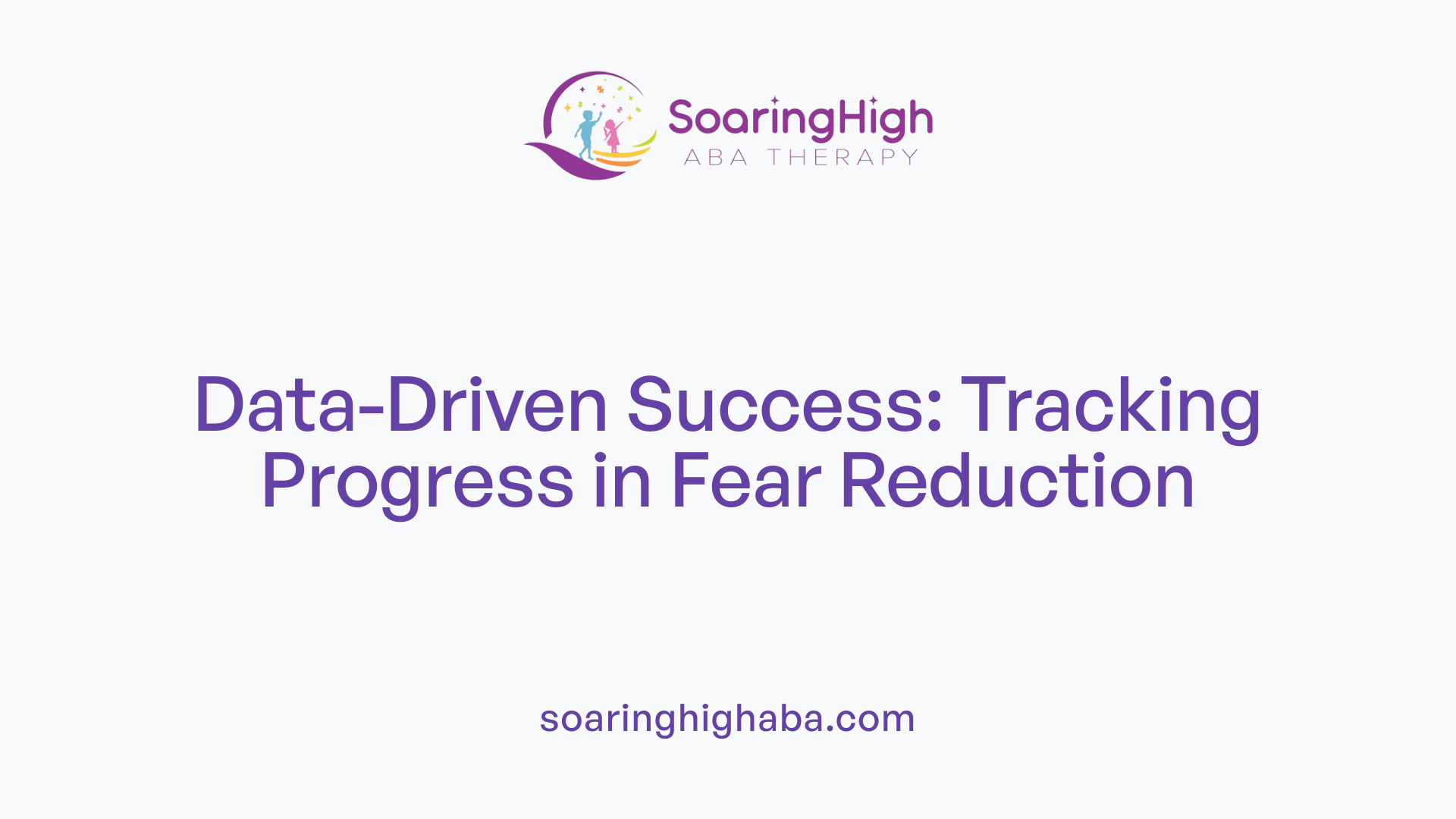
How is behavioral data collection and analysis used in ABA therapy?
Behavioral data collection and analysis are fundamental components of ABA therapy. During sessions, therapists systematically record specific behaviors, including instances of fear responses, avoidance, or engagement with feared stimuli. This can involve tally charts, frequency counts, or more sophisticated tools like digital data loggers.
Data analysis helps in identifying patterns, triggering factors, and progress over time. By regularly reviewing this information, therapists can assess whether an intervention is effective or if adjustments are needed. For example, if a child's fear of spiders decreases after gradual exposure, the data will reflect a reduction in fear-related responses.
This evidence-based method ensures that therapy remains personalized and adaptable, aligning with each child's unique response patterns.
The Future of ABA: Integrating Technology and Parental Involvement
How are AI and technological advancements shaping ABA therapy?
The integration of artificial intelligence (AI) and new technologies is revolutionizing the way ABA therapy is delivered. AI-powered tools can analyze vast amounts of behavioral data efficiently, allowing therapists to track progress more accurately and tailor interventions to each child's unique needs.
New software applications and devices enable real-time data collection, making therapy sessions more precise and responsive. For example, machine learning algorithms can identify patterns in a child's responses, helping therapists adjust strategies promptly. Additionally, virtual reality (VR) and augmented reality (AR) are being explored as immersive environments for graduated exposure, especially helpful for phobias or anxieties.
What role does remote support and telehealth play in ABA?
Remote support and telehealth solutions are expanding access to ABA therapy, especially for families in rural or underserved areas. Video conferencing platforms allow therapists to conduct sessions remotely, providing continuity of care without the need for travel.
Remote systems enable therapists to monitor progress through digital diaries, behavior tracking apps, and video recordings. This setup also facilitates frequent communication between therapists and parents, fostering ongoing support and guidance.
How can parents be trained and empowered to reinforce strategies at home?
Parental involvement is crucial in maximizing the benefits of ABA therapy. Researchers and practitioners are developing comprehensive training programs that equip parents with strategies to reinforce learned skills.
These programs might include online modules, live coaching, and interactive resources such as visual supports and social stories. Parents learn techniques like using reinforcement schedules, modeling appropriate behaviors, and employing calming strategies during moments of distress.
Supporting parents in understanding their child's specific fears helps create consistent routines and responses, which are vital for effective therapy outside of formal sessions.
How are interventions becoming more personalized with data analysis?
Data-driven approaches are central to customizing ABA interventions. As behavioral data is gathered, sophisticated analysis allows therapists to identify which strategies work best for each child.
Personalized interventions involve adjusting the intensity, type, and timing of techniques like graduated exposure, stimulus fading, or social story use. For example, if data indicates a child responds well to visual supports, these can be prioritized in the plan.
Technology facilitates this personalization by providing detailed insights through dashboards and reports, enabling a dynamic therapy process that evolves with the child's progress.
| Technology & Strategy | Description | Impact on Therapy |
|---|---|---|
| AI and Data Analysis | Use of machine learning and big data to tailor interventions | More precise, adaptive, and measurable therapies |
| Telehealth Solutions | Remote sessions via video calls and digital tools | Increased access, continuity, and flexibility |
| Parental Training Platforms | Online education and coaching for parents | Empowers families, improves consistency |
| Virtual Reality & AR | Immersive environments for exposure therapy | Enhanced engagement and gradual desensitization |
| Real-Time Data Monitoring | Continuous tracking of behaviors and responses | Facilitates quick adjustments, personalized plans |
As the field of ABA continues to evolve, combining technological innovations with active parental involvement promises a future where therapy is more accessible, personalized, and effective. These advancements may ultimately lead to better outcomes for children with autism, helping them face fears, develop skills, and improve their overall well-being.
Transforming Fears into Functional Skills
ABA therapy offers a comprehensive, evidence-based approach to help children with autism overcome fears and phobias. Through personalized strategies, gradual desensitization, and active parental involvement, ABA not only reduces anxiety but also equips children with the skills needed for lifelong emotional resilience. As technology advances, interventions will become even more tailored and accessible, promising a brighter future for children facing fears.
References
- The Impact of ABA Therapy in Addressing Phobias and Fears in ...
- How ABA Therapy Can Help Autistic Children Manage Fears
- How ABA Therapy Helps Children Overcome Fears and Anxieties?
- What is Graduated Exposure? ABA Techniques, Treating Autism
- Can ABA Therapy Help with Anxiety?
- A Systematic Review of the Treatment of Fears and Phobias Among ...
- Stimulus Fading and Differential Reinforcement for the Treatment of ...
- Addressing fears of children with Williams syndrome - Frontiers





































































































